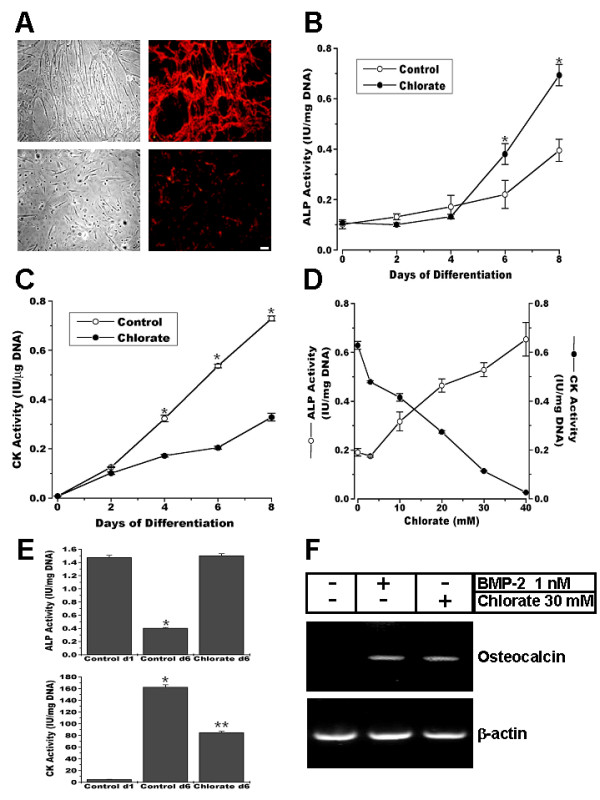Figure 1.

Inhibition of proteoglycan sulfation induces osteogenic markers expression in C2C12 myoblasts. Myoblasts were induced to differentiate in the absence (control) or presence of 30 mM sodium chlorate (chlorate) A. Phase contrast microscopy (left column) and perlecan indirect immunofluorescent staining (right column) of non-permeabilized cells C2C12 cells at 6 days of differentiation under control (upper row) and chlorate (lower row) conditions. Bar = 25 μm. B and C. ALP (B) and CK (C) activities were measured at different time points after inducing differentiation of C2C12 in control or chlorate conditions. Both enzymatic activities were significantly different in control vs. chlorate (p < 0.0001, unpaired t-test). D. ALP and CK measurements at eight days after induction of differentiation of C2C12 cells under different concentrations of sodium chlorate. E. ALP (upper panel) and CK (lower panel) activity determinations at day 1 and 6 of differentiation of primary cultures of muscle cells from rat fetal hind limbs under control or chlorate conditions. * = p < 0.001 different from Control d1 (lower panel) or Control d1 and Chlorate d6 (upper panel); ** = p < 0.001, different from Control d1 and d6 (One-way Analysis of Variance (ANOVA) followed by Tukey-Kramer multiple comparisons test). All the data are presented as Mean ± S.D. of two (E) or three (B-D) independent experiments performed in triplicate. F. RT-PCR for Osteocalcin and β-actin performed on RNA extracted from C2C12 cells at 6 days of differentiation in the absence or presence of 1 nM BMP-2 or 30 mM sodium chlorate.
